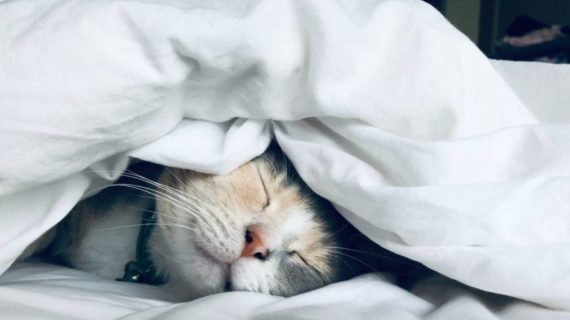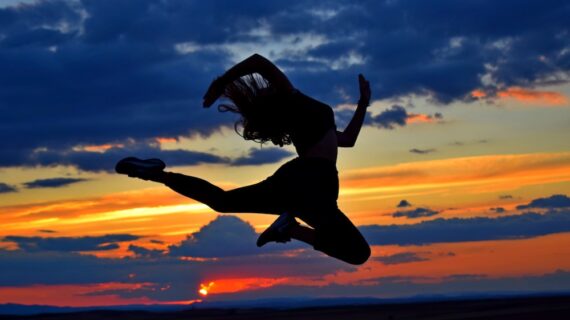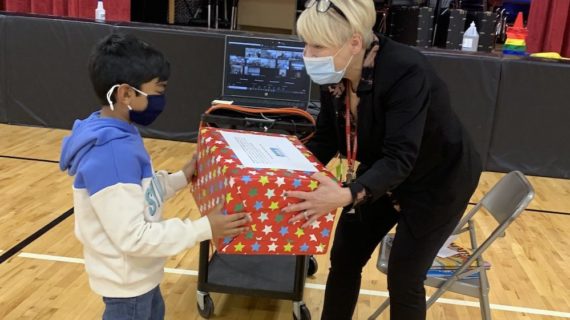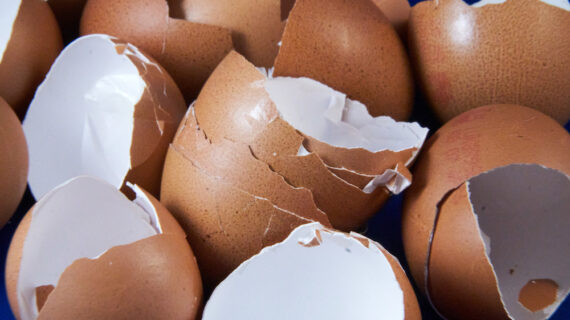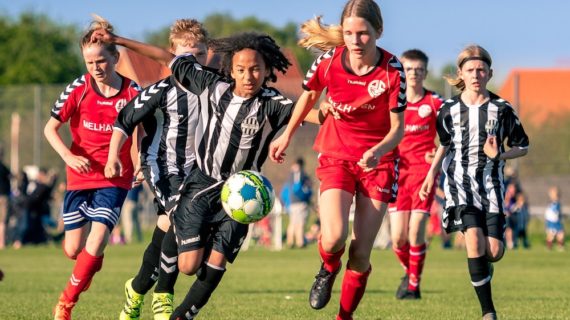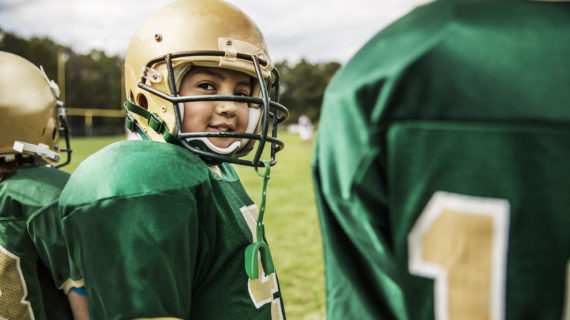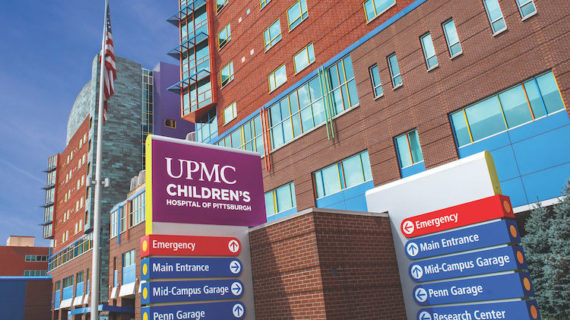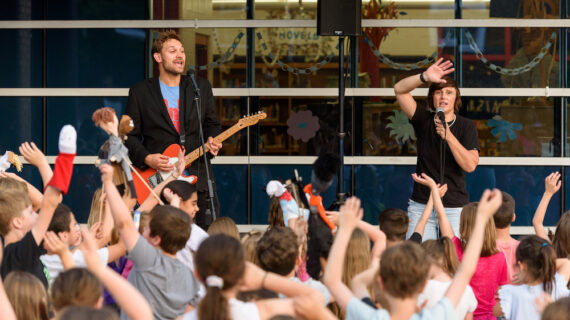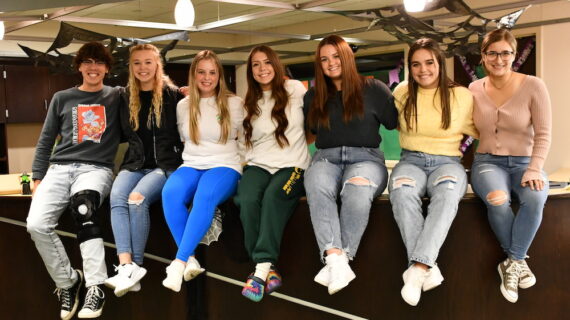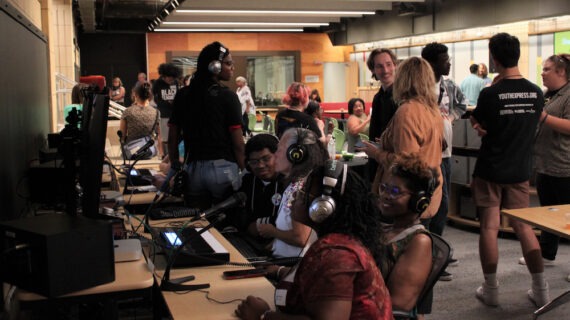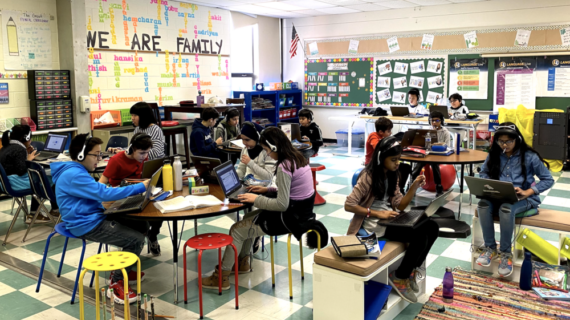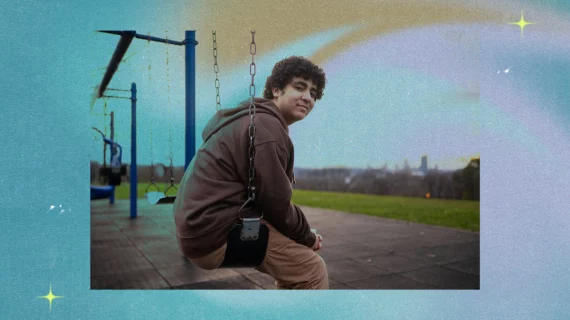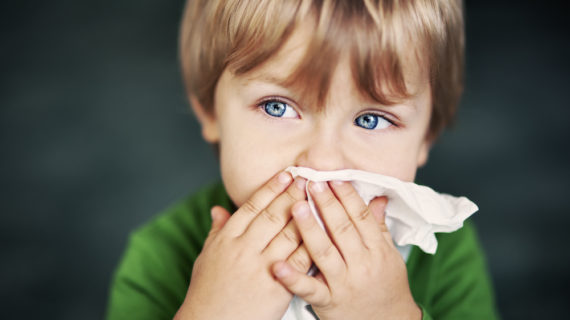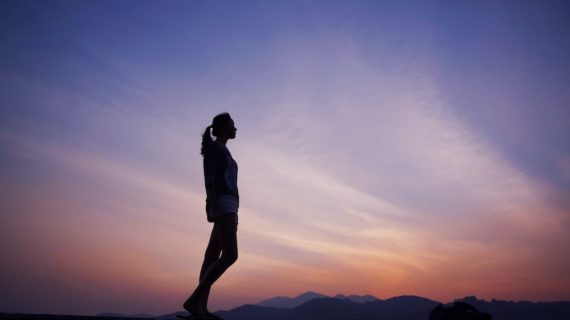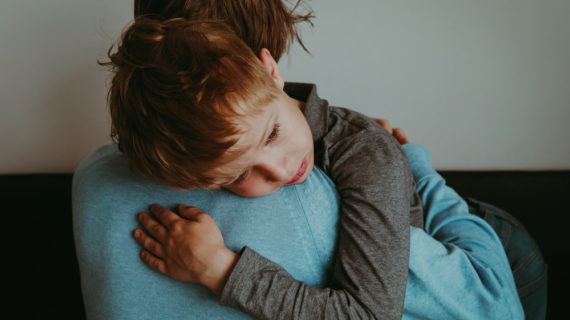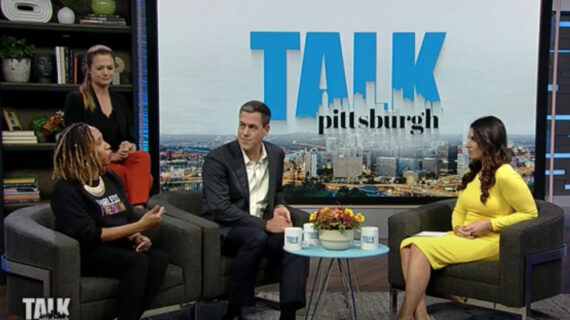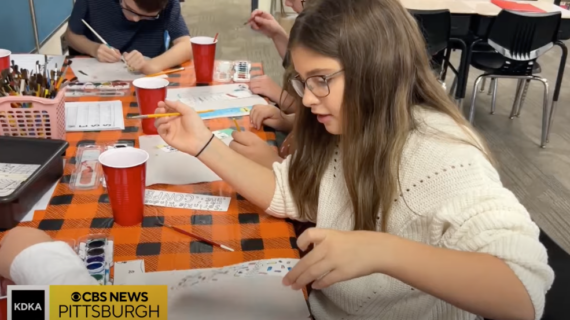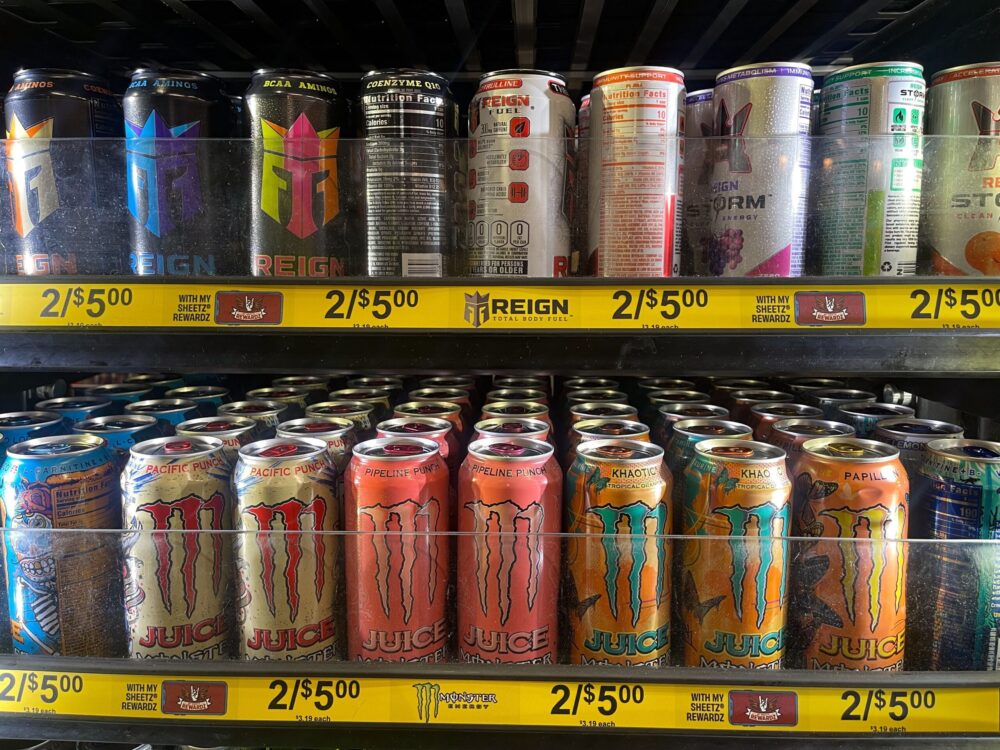
Kids’ caffeine consumption is growing: What medical experts want you to know
Last summer, pediatric nutritionist Laura Cordero found herself investigating a mystery. High school football players practicing for the coming season were battling dehydration and muscle cramps like never before. The weather was hot and these teens were sweating, but that was nothing new. What had changed?
Talking to coaches and players, the Allegheny Health Network nutritionist and dietitian discovered the problem: “Energy” drinks have become increasingly popular among teens – and more available than ever.
Monster. Rock Star. Ghost. Reign. Bang. Red Bull. These high-caffeine beverages, many with brightly colored packaging and co-branded, kid-friendly flavors like Swedish Fish and Sour Patch Kids, take up a growing swath of refrigerator-case real estate at convenience stores across the region.
Many of these canned drinks contain 200 mg of caffeine – the equivalent of two cups of coffee, or six cans of caffeinated pop or 2½ cans of Red Bull. Some, like Bang, contain 300 mg – the same as three cups of coffee, nine cans of cola or five regular-sized cans of Red Bull.

Access is also growing. Energy drinks have begun appearing in high school vending machines right by cafeterias. And in places like Panera Bread, a large, self-serve cup of “charged” lemonade has 390 mg of caffeine — the same as four cups of coffee or two cans of Monster. That’s about four times the American Academy of Pediatrics’ recommended maximum of 100 mg daily for people between 12 and 18.
Their recommendation for kids under 12? Avoid caffeine entirely.
So with some teens stopping at drive-thrus to get large iced coffees before or after school, and perhaps consuming a canned energy drink at school, it’s easy for a teen to routinely consume 400 mg of caffeine a day without realizing it – and without parents realizing it, either.
Compounding the problem: Social media influencers post about using these drinks while working out, giving young people the idea that energy drinks are simply an intense type of sports drink. But they’re essentially the opposite. Caffeine is a diuretic, so caffeine-fueled energy drinks dehydrate instead of hydrating and can cause a host of other health issues.
The popular drink brand Prime, heavily promoted by social media influencers Logan Paul and KSI, adds to the confusion.
Prime offers two kinds of drinks: Prime Energy and Prime Hydration. Prime Hydration is caffeine-free, and has some but not all of the electrolytes that sports drinks offer. But it and its more in-your-face sibling, caffeine-fueled Prime Energy, come in some of the same flavors with nearly identical packaging. The difference: One comes in a plastic bottle and the other in a can.
“Sports drinks and energy drinks are significantly different products, and the terms should not be used interchangeably,” according to an American Academy of Pediatrics clinical report.
But young fans of YouTubers Paul and KSI may be so excited about being seen with this status product that they don’t notice the fine print on the labels or parsing what it means.

Concerns over Prime led to Sen. Chuck Schumer, D-NY, to call on the U.S. Food and Drug Administration to investigate Prime Energy for its claims, marketing and caffeine content.
“One of the summer’s hottest status symbols for kids is not an outfit, or a toy. It’s a beverage. But buyers and parents beware, because it’s a serious health concern for the kids it so feverishly targets,” Schumer said in July.
“Prime is so new that most parents haven’t a clue about it, but it is born from the reels of social media and the enigmatic world of influencers,” the senator said. “Kids see it on their phones or as they scroll, and they actually need it, and the problem here is that this product has so much caffeine in it that it puts Red Bull to shame. But unlike Red Bull, this product has one true target market: children under the age of 18.”
In response, Prime said the caffeine in its energy drink falls “within the legal limit of the countries it’s sold in” and that it had “complied with all FDA guidelines before hitting the market,” according to a statement shared with NPR.
“As a brand, our top priority is consumer safety,” the company wrote, “so we welcome discussions with the FDA or any other organization regarding suggested industry changes they feel are necessary in order to protect consumers.”
WHY CAFFEINE AND TEENS DON’T ALWAYS MIX
There are many reasons why pediatricians recommend that kids and teens avoid caffeine. Topping the list, says Cordero: Caffeine stimulates the central nervous system without “providing necessarily long-acting energy.”
“Some of these athletes, or just teens in general, are looking for that little quick high. But it’s not really fueling them,” she says. Instead, it can be addictive and can stunt brain development.
Along with the possible crash after that brief high, and the dehydration that can produce muscle cramps or tremors, caffeine also increases the heart rate. It can cause irritability and anxiousness, and that jitteriness can magnify the stress a high school student may already be feeling.
Caffeine features another odd quirk. Though it’s a stimulant, it can actually slow reaction time in drivers. And caffeine also leads to trouble sleeping, so the cycle of caffeination resets each morning as they struggle to get out of bed.
“I do hear a lot more teens say, ‘Yeah, I get my cup of coffee in the morning,’” Cordero says. And many teens skip breakfast, so they begin the day with coffee on an empty stomach.
WHAT PARENTS CAN DO
Social media influencers promote energy drinks. The liquids come in candy flavors with appealing labels and a massive marketing machine promoting them. And many kids may already have some degree of caffeine addictions that, to be broken, require pushing through days of headaches. What can a parent do?
Cordero has been helping teens “focus on how to incorporate hydration and not depend on the caffeine,” she says.
She encourages high consumption of water – perhaps flavored with fruit to replace the intense flavors of canned drinks. And she offers a few pieces of on-the-ground advice to manage through this issue:
- Milk — including chocolate milk – is a far better post-exercise hydrator and daily fuel. Unlike milk, an energy drink is “not giving them protein. It’s not giving them carbohydrates. It’s not giving them long-acting fuel and fat. It’s just giving that stimulation.”
- If a child or teen is taking medication for ADHD, parents should talk to pediatricians or pharmacists to discuss potential interactions.
- Parents can also teach their kids to tally their daily caffeine consumption and learn the difference between energy drinks and sports drinks.
But the biggest tip of all is this: Know that energy drinks are, for the most part, empty calories and not a nutritional supplement. “Our kids,” Cordero says, “need some actual type of fuel – not the stimulant type of fuel.”



